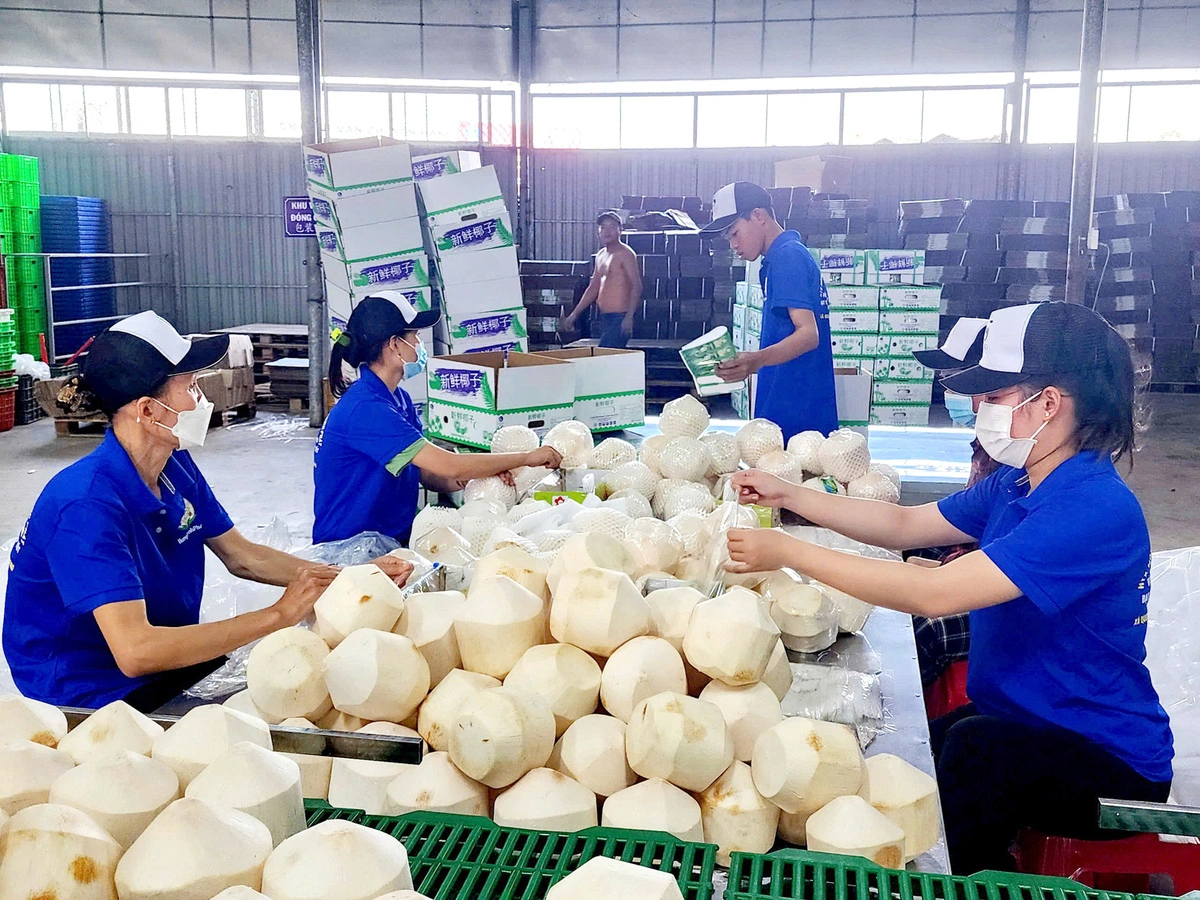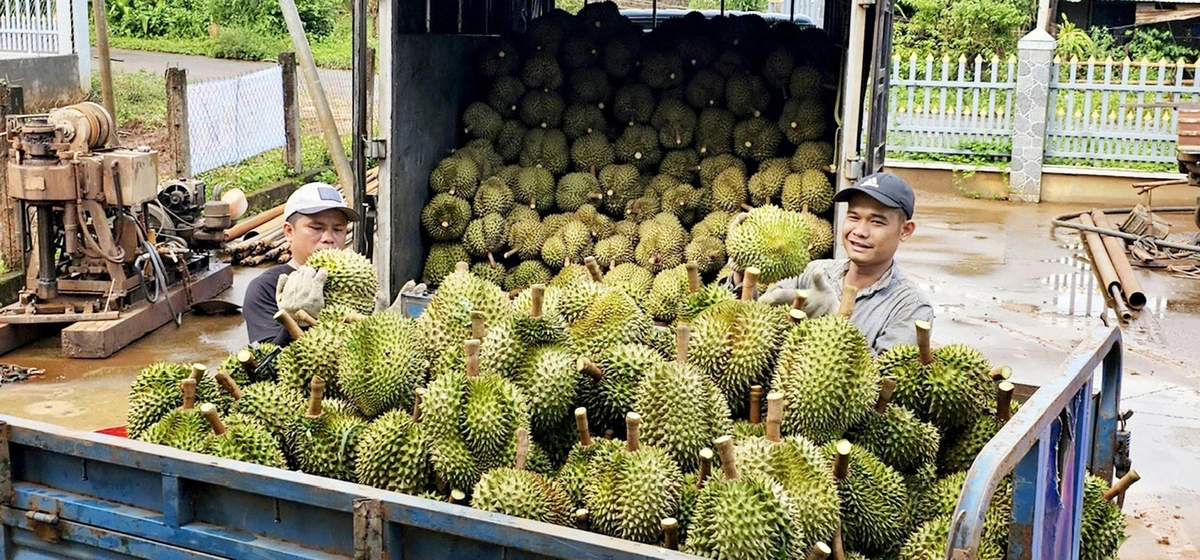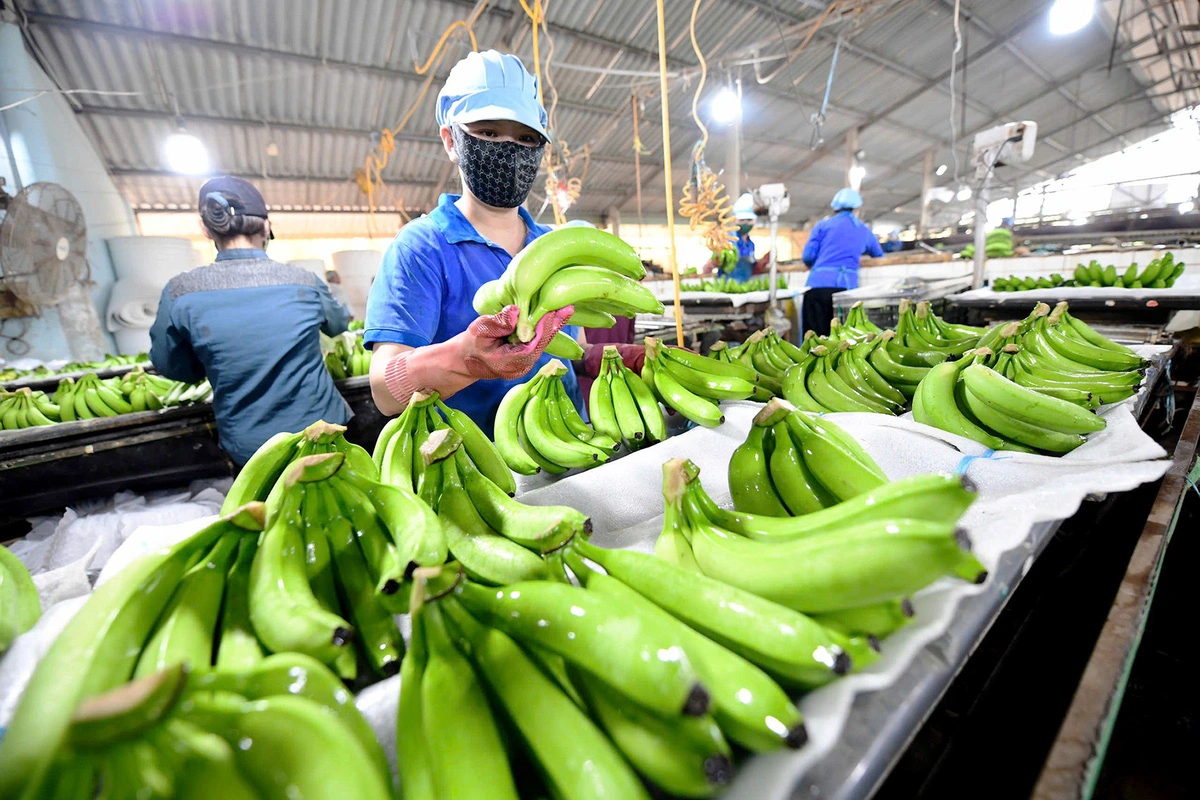Vietnamese agricultural product brands are popular in the Chinese market and Vietnamese coconut and durian exports to China are expected to continue to grow, Chinese Consul General in Ho Chi Minh City Wei Huaxiang told Tuoi Tre (Youth) newspaper in a recent interview.
Wei confessed that he does not know how to speak Vietnamese, but the Vietnamese words he knows are related to Vietnamese agricultural products, such as bananas, Ca Mau shrimp, star apples, ST25 rice, coconuts, and durians.
In the practical cooperation between the two countries, agricultural cooperation is of great interest, with many Vietnamese agricultural products being exported to the Chinese market via official channels.
Great opportunity for coconuts
Coconuts has a great opportunity in the Chinese market, Wei said, adding that he and other Chinese people like coconuts as coconut water is sweet and refreshing, good for health and ensures food hygiene and safety.
A survey shows that China has a huge demand for coconuts, at about 2.8 billion fresh coconuts per year.
The demand is even greater when coconuts are used as a raw material for processing beverages.
|
|
| Chinese Consul General in Ho Chi Minh City Wei Huaxiang |
A report on China's beverage industry in 2023 indicated that among 40 materials for juicing, coconuts are the most used.
Up to 37 out of 40 famous soft drink brands in China produce coconut-based products.
Chinese consumers are keen on fresh coconut juice, and coconuts are also used in the production of many products, so the demand for the drupe is huge.
Also in 2023, fresh coconuts ranked first among the 11 Vietnamese agricultural products that China had a high demand for.
Vietnam has more than 200 varieties of coconuts, many of which are of high quality, according to Wei. He voiced his hope that many high-quality Vietnamese coconuts will be imported into China.
Like many other fruits, Vietnam should pay attention to planting area codes and packaging facilities, which must be registered and approved, to export fresh coconuts to China.
Gardens that have registered to export coconuts to China must build a quality management and traceability system, applying good agricultural practices.
All growing areas must keep records of monitoring and control of harmful organisms and provide them to the Chinese side when requested.
Durian exports maintain high growth rate
Regarding Vietnam’ durians, the Chinese consul general said he saw durians in large supermarkets, but not in small localities in 2023.
However, he found Vietnamese durians on the shelves of small Chinese fruit restaurants in 2024.
This proves that Vietnamese durians have penetrated into the second- and third-tier markets of China, Wei noted.
In general, Vietnam’s agricultural product imports into China have a fast growth rate, at 30 percent per year on average.
|
|
| Durian exports to China are forecast to continue booming. Photo: Nguyen Tri / Tuoi Tre |
China spent US$2.3 billion importing Vietnamese durians in 2023, and the figure increased to nearly $3.5 billion last year.
Thus, the northern neighbor’s import demand for durians increases 30 percent each year. Vietnam’s durian export revenue from China can reach $5 billion this year.
The two sides signed a protocol on plant quarantine and food safety for frozen durians in 2024.
Frozen durians are a new product for Chinese people, with a higher added value than fresh durians. Therefore, it is necessary to diversify transport means to reduce costs and meet the increasing demand of Chinese consumers, Wei noted.
Ensuring standard production is a must
The high demand and transport issues put pressure on both Chinese and Vietnamese sides. The two countries are building smart, electronic, and digital border gates to improve the efficiency of border gates, while discussing the establishment of cross-border economic zones.
If a product is transported by sea, rail, and road, border gates will face lower pressure and be much more efficient.
Efficiency will increase with more administrative reforms and the establishment of cross-border economic zones, the Chinese consul general suggested.
Answering a question about China’s fluctuating import demand, he affirmed that it is the choice of Vietnamese farmers to plant and produce agricultural products, and the government is responsible for informing people of the rules of the market.
The government needs to guide farmers on the price rules of each product, specifically the demand for and prices of products in different periods in a year.
Vietnam should diversify markets to reduce risks.
Not only China, but many markets such as Europe and the U.S. set strict requirements on food safety, especially for imported agricultural products.
Therefore, Vietnamese agricultural products must meet the standards of importing countries.
Domestic production processes should be standardized, Wei advised.
In addition to pesticide residues, all stages in the production process must satisfy standards to ensure product quality as well as the prestige of Vietnamese agricultural products.
Increasing demand for fresh fruits worldwide
According to data from the General Department of Vietnam Customs, Vietnam’s vegetable and fruit exports picked up over 27 percent in 2024 to surpass $7 billion for the first time.
China was the largest importer spending $4.6 billion buying the drupe from Vietnam, accounting for more than 60 percent of the Southeast Asian country's vegetable and fruit export turnover.
|
|
| Vietnam’s bananas were most consumed in China, surpassing Philippine bananas for the first time in 2024. Photo: Q.Dinh / Tuoi Tre |
According to a report from German data collection platform statista.com, global fresh fruit market revenue will reach $778.4 billion in 2025 and grow an average of 6.22 percent per year until 2029.
Nguyen Thanh Binh, chairman of the Vietnam Fruit and Vegetable Association, reported that the export value of many items, such as durians, longans, jackfruits, bananas, and mangos, grew strongly in 2024 and is forecast to increase further in 2025.
The country set a target to export over $8 billion worth of vegetables and fruits this year, up $800 million over 2024.
Durians will maintain as a key export earner which is expected to bring in more than $3.5 billion.
The domestic durian supply is forecast to rise as China has opened doors for frozen durians while purchasing up to 95 percent of Vietnam’s fresh durian output, Binh noted.
In 2025, Vietnam will further negotiations for grapefruits, avocados, passion fruits, and custard apples hoping to ship more products to the northern neighbor.
In addition to exporting fresh products, Vietnam should diversify products and enhance deep processing.
According to Vo Quan Huy from Huy Long An Co. Ltd. in southern Long An Province, Vietnam’s bananas were most consumed in China, surpassing Philippine bananas for the first time in 2024.
Vietnamese bananas hold a strong position in China due to their compliance with market regulations.
However, Huy expected demand in China to remain strong year-round, rather than peaking only from February to April as in previous years.
Like us on Facebook or follow us on Twitter to get the latest news about Vietnam!





















































